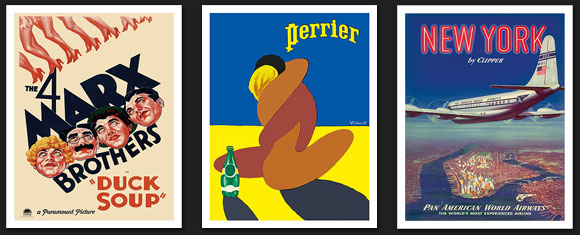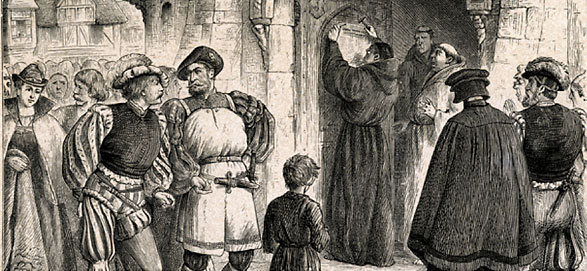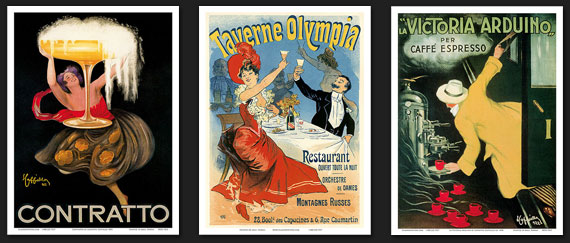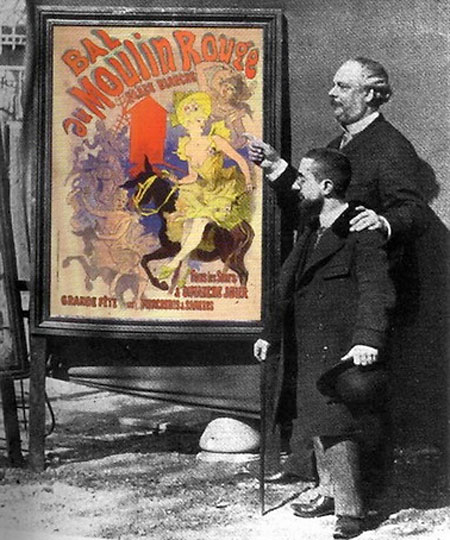The History of Poster Art over the last two Centuries. Part 1

The modern poster, as we know it, dates back to 1870 when the printing industry perfected color lithography and made mass production possible.
Posters have come to be recognized as a vital art form, attracting artists at every level, from painters to theatrical and commercial designers and they have shown a great range of styles. Posters, in the form of placards and posted bills, have been used since earliest times, primarily for advertising and announcements. Purely textual posters have a long history: they made citizens aware of government or church proclamations for centuries.

Martin Luther nails his reformist theses at All Saints Church in Wittenberg, Germany, 1517
However, the great revolution in posters was the development of printing techniques that allowed for cheap mass production and printing, including notably the lithographic technique which was invented in 1796 by the German Alois Senefelder. The invention of lithography was soon followed by chromolithography, which allowed for mass editions of posters illustrated in vibrant colors to be printed.
By the 1890s, the technique had spread throughout Europe. A number of noted French artists created poster during this period. Jules Chéret is considered to be the “father” of advertisement placards. He was a pencil artist and a scene decorator, who founded a small lithography office in Paris in 1866. He used striking characters, contrast and bright colours, and created over 1000 advertisements, primarily for exhibitions, theatres, and products. The industry soon attracted the service of many aspiring painters who needed a source of revenue to support themselves.

Chéret developed a new lithographic technique that suited better the needs of advertisers: he added a lot more color which, in conjunction with innovative typography, rendered the poster much more expressive. Not surprisingly, Chéret is said to have introduced sex in advertising or, at least, to have exploited the feminine image as an advertising ploy. In contrast with those previously painted by Toulouse-Lautrec, Chéret’s laughing and provocative feminine figures meant a new conception of art as being of service to advertising.

Jules Chéret and Toulouse- Lautrec (with cane), ca. 1894
Posters soon transformed the thoroughfares of Paris into the “art galleries of the street.” Their commercial success was such that some of the artists were in great demand and theatre stars personally selected their own favorite artist to do the poster for an upcoming performance. The popularity of poster art was such that in 1884 a major exhibition was held in Paris.
To be continued…